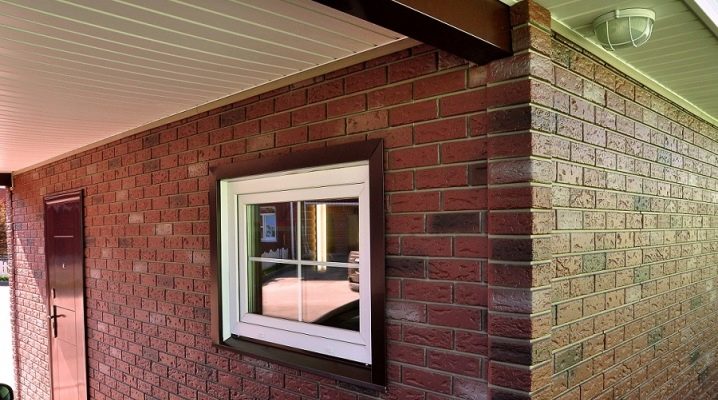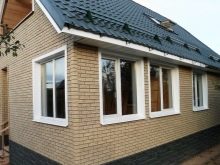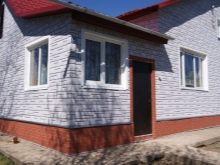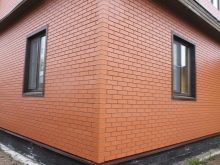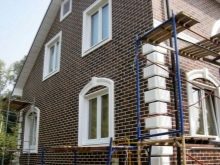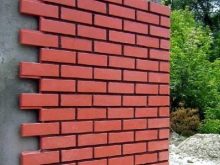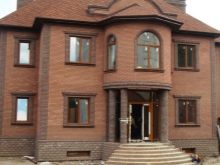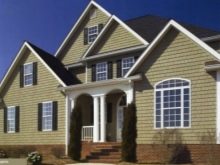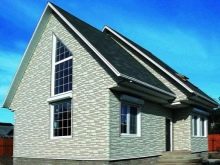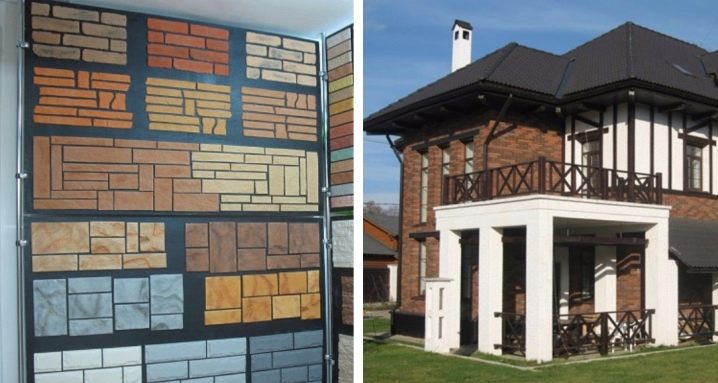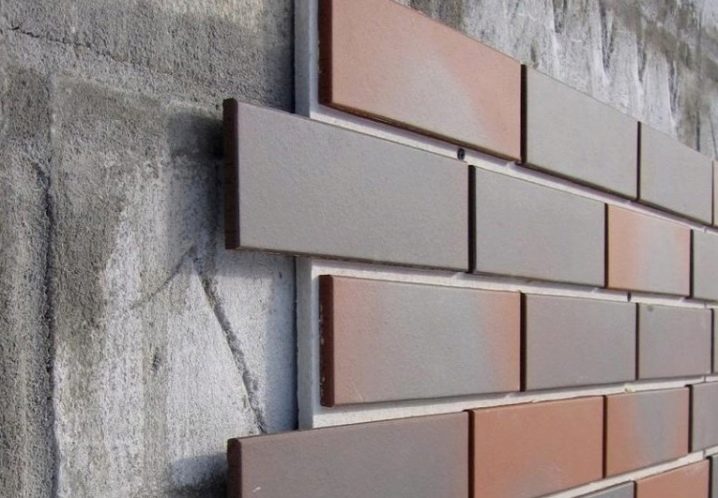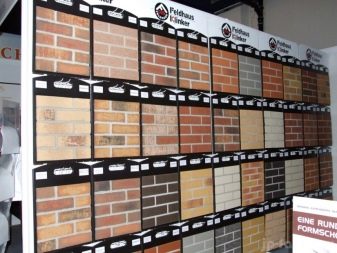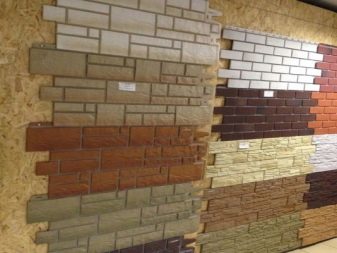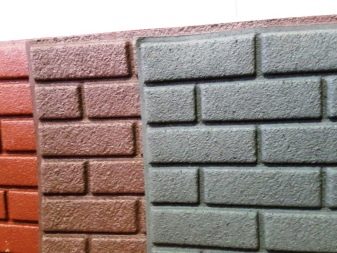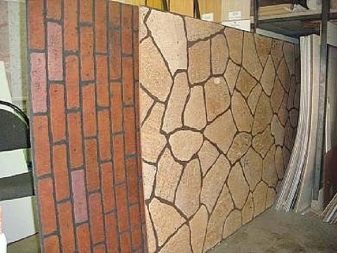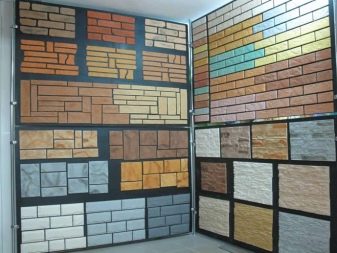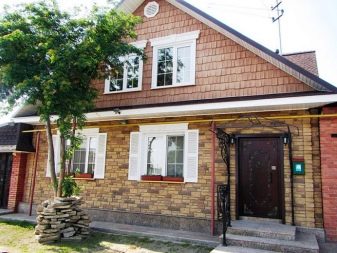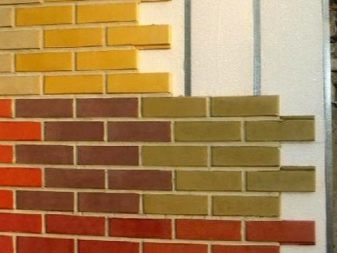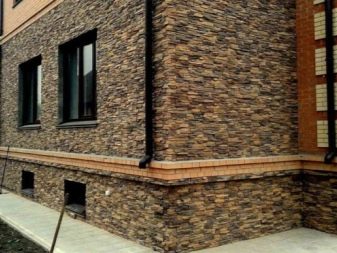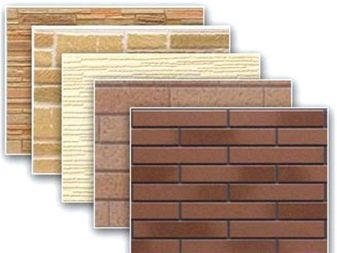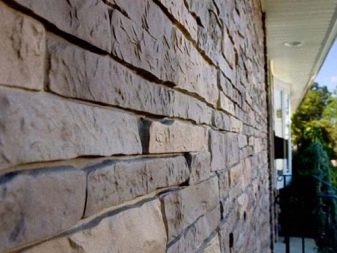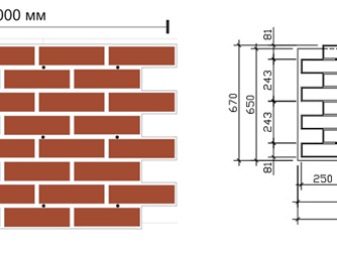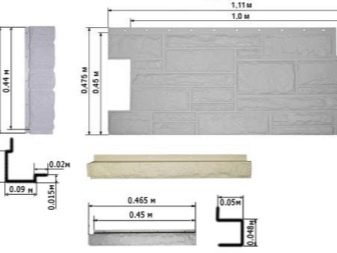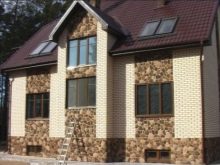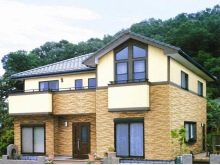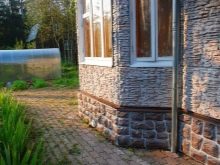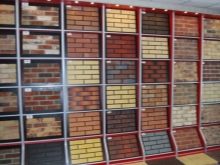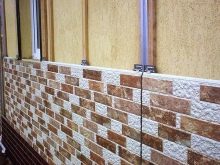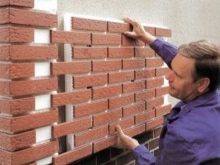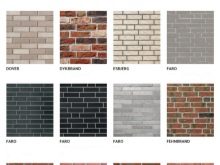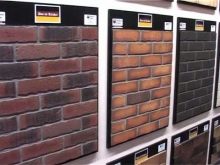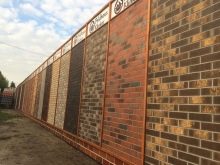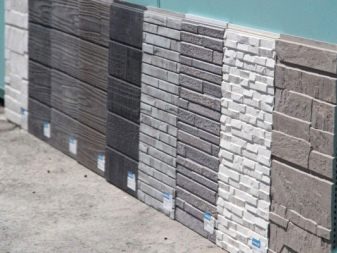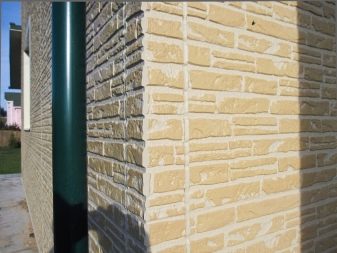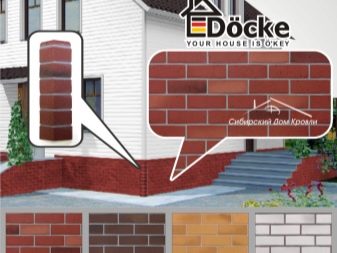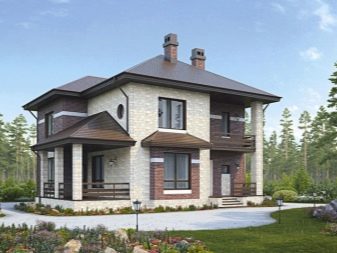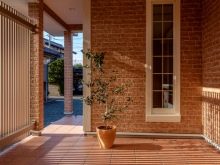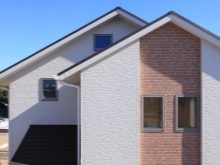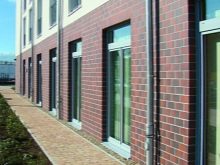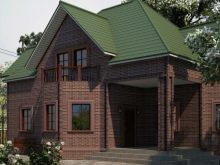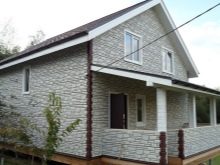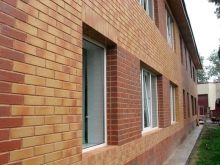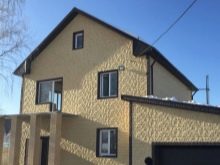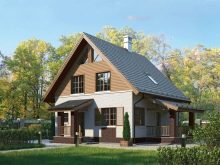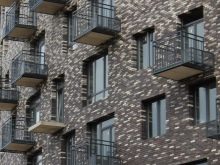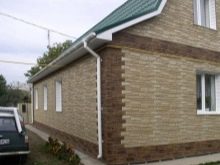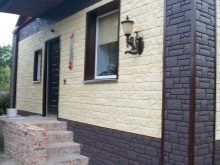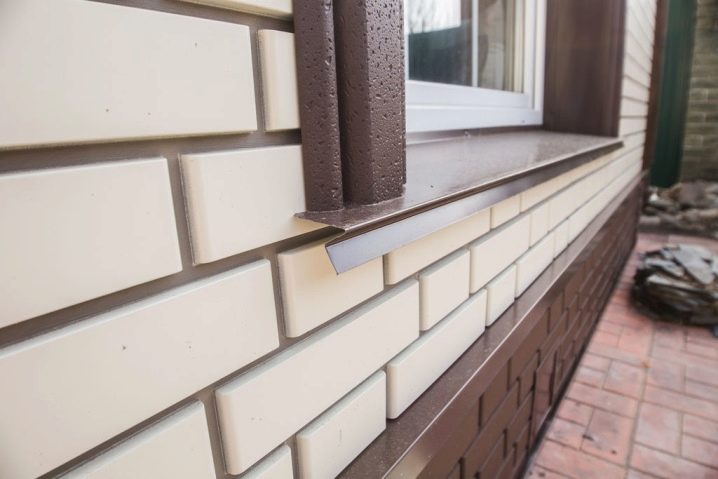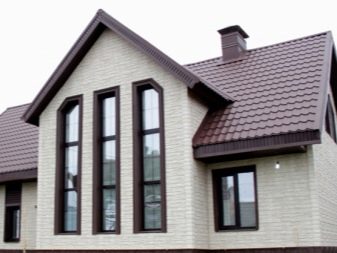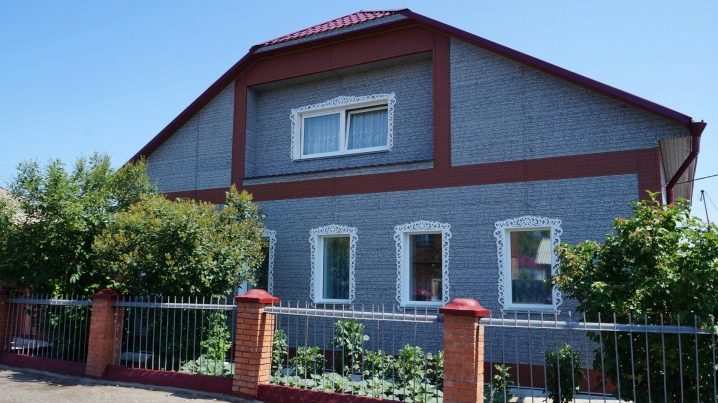Brick front panels: material features for exterior finish
Facing the facade plays a huge role in the modern exterior, since not only the appearance of the architectural structure depends on it, but also the lifetime of the structure itself. To date, there is a huge choice of finishing material, with which you can originally perform the decoration of buildings, but brick panels are particularly popular. They are available in various types, are easy to install, have a rich color gamut and texture, therefore, are ideally suited for any design style.
Description
Front panels under a brick are unique material which found broad application in external finishing of buildings.Produce them from cement-sand mortar, so the raw material is environmentally friendly and harmless to human health. To make the material durable and resistant to the external environment, plasticizers, polymer blends and stabilizers are also added to its basic composition. Such panels are produced in various colors and textures, thanks to which the facade can be finished in any style. Two-component water-based dyes are used for dyeing products, so the natural shades of the panels look natural and retain their appearance for a long time without fading into the sun.
As for the texture of the panels, for the exterior of the house, you can choose a material with a chipped, smooth, and corrugated or rough surface. At the same time, regardless of what type of panels will be chosen, the lining in any case will acquire a pronounced relief, which will give the building chic. As a rule, this material is used for exterior decoration of the walls of country houses, but it can also be found in the design of other buildings. The panels are usually installed either on the entire surface of the walls or make separate inserts that emphasize the design.
Kinds
Front panels with imitation of a brick produce different types, each of which differs not only in size, shape, but also the composition of the elements. Therefore, the material may have its own characteristics and characteristics.
To date, there are two main types of panels.
- With a homogeneous structure. Such decorative products are made of PVC and polymeric materials. Due to the presence of special modifiers, the material is resistant to moisture, temperature changes and deformation.
- With a combined structure. These are the so-called thermopanels, which are produced using a special technology by the method of combining polymers with insulating material. The result is an excellent heat insulator, which is not inferior in its qualities even to polyurethane foam or polystyrene foam. Performing the finishing of such panels, it is not necessary to lay an additional layer of insulation. The only disadvantage of the product is its high price, but, unlike other panels, its installation is much easier.
In addition, front panels under a brick happen the following types:
- Clinker. Represent a material for the manufacture of which use clinker bricks.They are considered an ideal option for exterior decoration, as they have many advantages: strength, high wear resistance, good thermal insulation. Facing panels are available in a huge range of textures and colors. The minus of the product is the complexity of its installation.
- Concrete. Produced on the basis of concrete in a rich selection of colors. The main components of the material is high-quality cement and sand. In some types of panels, a quartz-cement composition may also be present, to which natural dyes and cellulose are added. Thanks to modern production technology, the product has a low weight and is provided with mounting brackets that facilitate lining. The only drawback of such panels is the high price.
- Polymer. The product is made of polymer raw materials, which makes the panel light and easy to install. Externally, the material resembles siding with imitation of the laying of natural brick. It is affordable, perfect for any style. Especially beautifully look in a modern exterior of the panel under an antique brick and under a stone.As for the shortcomings, the product is not recommended for use in finishing buildings placed in harsh climatic conditions.
- Polyvinyl chloride. They are characterized by good strength, ductility and can withstand temperature changes very well. The color palette of the panels is different. The material imitating burnt and sandy brick looks interesting. There are also combined models in the form of a mosaic decor, a ceramic layer is applied on their surface. Although the price of the product is low, for installation it is necessary to additionally purchase heat-insulating materials, so the final installation is expensive.
Specifications
Decorative brick panels appeared on the construction market recently, but in a short period of time they managed to establish themselves as the most popular material that is widely used for cladding facades.
The huge demand for the product is explained by the following characteristics:
- High resistance to environmental influences. Panels are not afraid of moisture, temperature extremes and ultraviolet radiation.
- On the surface of the material does not form salt streaks.This problem is often encountered when finishing facades with natural brick, which absorbs moisture well. Artificial analogs are protected from the appearance of raids, since they have a low coefficient of absorption.
- Huge selection. Manufacturers present in the market panels of various colors and textures. Especially popular are products with imitation of red, yellow, white and beige bricks. Thanks to such a chic assortment, it became possible to uniquely design the facade, giving it a beautiful and stylish look.
- Easy installation. Installation of the material is carried out quickly and can be done independently, without the help of experts. Since the panels are produced in large sizes, the installation work does not take much time.
- Durability. The term of operation of such finishing is identical to a usual bricklaying.
- Low weight. Due to the fact that products are manufactured using modern technologies from polymers, they weigh little and significantly reduce the load on the foundation.
- Strength. The material can withstand any mechanical stress and is considered much more reliable than siding.
- Fireproof.The panels are non-flammable and, in the event of a fire, have a minimum ignition rate.
- Good thermal conductivity. Most of the model range is available with a special heater, so these panels are warm and at the same time play the role of not only a decorative element, but also a high-quality heat insulator.
As for the faults of the facade material, its main disadvantage is the high cost. In addition, in some cases, in order to perform the lining of buildings with a complex structure, it is necessary to resort to the help of professionals, and this will entail additional costs.
Dimensions
Before facing the building with facade panels, it is necessary not only to decide on their design, but also to choose the right size. Since the product is produced with a protective layer, it is important to consider that the thickness of this finish will be no more than 3 mm. Each brand produces panels in accordance with the established standards for a particular model range, so the dimensions may be different. As a rule, products are made in the form of three nuclear panels with dimensions of 19.8 * 35 * 2.4 cm. If you buy products of this size, their consumption per 1 m2 of wall will be approximately 14 units, while the weight of the finish will not exceed 20 kg.
Color solutions
When drafting a construction project, it is necessary to provide not only its internal design, but also the external decor. To do this, you must pre-select the appropriate color lining, which would be harmoniously combined with all elements of the exterior. To date, panels of gray and white brick are very popular. If the building needs to be refined, it is recommended to use a terracotta, red and yellow color for the facade. It is not necessary to perform wall cladding in the same shade, for example, white brick will be perfectly combined with burgundy and peach inserts, and gray can be supplemented with red-brown compositions.
Since the front panels are made in a rich palette of colors, when choosing them you need to take into account the peculiarities of the architectural construction and pay attention to the finishing of the basement and the roof. A huge role is also played by the geographical location of the building, its size and purpose. Depending on this, the decor can be made panels of both cold and warm shades. Red and orange are considered warm colors, purple, blue and green are cold, and gray are neutral.
Manufacturers Overview
The panels with imitations of bricks are presented on the market by many manufacturers, therefore they differ from each other not only in color, texture, but also in material.
Good reviews received products made on the basis of clinker tiles from brands such as ABC, Roben, Stroeher and Feldhaus Klinker. They are characterized by high quality and reliability, and an elegant selection of colors allows you to finish any building direction. The thickness of such panels is from 9 to 14 mm and the weight does not exceed 16 kg.
The material based on concrete from kmew companies. For the manufacture of products, this manufacturer uses only high-quality cement, plasticizing agents, pigments and fine sand. To simplify the installation of the panels, they are provided with special brackets for fastening, and thanks to a special casting technology, products acquire an invoice that is difficult to distinguish from natural brick. The dimensions of such panels - 45.5 * 30.3 cm, thickness - 16 mm.
Also popular in the decoration and polymer panels under the brick, which produces Docke-R. They are lightweight and easy to install.Since the product is lightweight, it does not load the base of the building and allows for additional laying of a thermal insulation layer. Externally, these panels are similar to vinyl siding, they are produced in standard sizes - 112.7 * 46.1 cm with a thickness of 16 mm.
How to choose?
The facade is considered to be the face of any architectural structure, so its decoration should be carried out accordingly. Recently, most of the masters for the exterior cladding of buildings began to use facade panels under the brick, as they reliably protect the structure from the negative impact of the external environment and give it a complete look to the image. Before you perform such a finish, you need to choose the right material.
To do this, consider the following points:
- Features of the structure. Depending on the purpose and size of the building panels of different types can be used. So, for a private house, products on a concrete base, made in warm colors, are recommended, but for public institutions, it is best to give preference to polymer panels of colder shades. The product can be installed on any surface, but the installation technology for a wooden and concrete base is different.The location of the building is also important - for zones with harsh climatic conditions, it is advisable to purchase panels that are already provided with thermal insulation.
- Performance characteristics. The material should be chosen with a high class of strength.
- Cost Available are both expensive and affordable panels, but it is worth remembering that the quality can not be saved. By purchasing products from well-known manufacturers who have proven themselves in the construction market, you do not have to worry about the reliability of the finish.
- Matching landscape design. All structures and extensions located on the territory of the land plot should be harmoniously combined with each other and complement each other beautifully. Therefore, the color and texture of the lining is selected in accordance with the general style of decoration. The facade, roof and basement of the building should be a single composition.
Raw Material Tips
Facing the facade is quite realistic to do it yourself, not having special knowledge and experience, the only problem can be the finishing of structures of complex architectural form.
The following tips will help the beginning masters in this:
- Before starting work, it is necessary to properly prepare the surface of the walls outside. For this, it is worth checking the foundation for evenness using the building level. In the event that drops exceed more than 1 cm, then panels cannot be mounted on such a base without alignment. Regardless of whether the walls are brick or concrete, they must also be primed. Wooden surfaces are treated additionally with antiseptic.
- It is important to correctly determine the level of the first row of cladding. Wall panels, as a rule, are fixed at 30 cm from the ground level. It is advisable to start the lining from the corners.
- The material is fixed with the help of special tile glue, it is applied dotted around the entire perimeter of the panel. In addition, the products can be installed on the batten, fixing them on the dowels. Fiber cement panels are best to fix the hexagon screws.
- After the first row is ready, then all the gaps between the wall and the material must be filled with foam.
- If during installation it turned out that the panel does not fit in a row, it should be cut with a grinder.
- The summer house, where you plan to live only in summer, can be lined with material without insulation, it will turn out much faster and cheaper.As for residential buildings, for them insulation is required.
- To finish aesthetic appearance, its joints need to be rubbed with special mixtures.
Beautiful examples
Front panels under a brick open huge opportunities for design creativity. Classic style is very popular in modern finishes, for which the roof is made in dark colors, and the facade is decorated with panels of pastel and coffee shades. It also looks beautiful facing yellow and white. At the same time for the decoration of the walls is recommended to use no more than three colors, one of which will be considered the main, and the other two - additional. The original solution will be the facade cladding material of different textures. By making individual inserts, you can achieve a terrific effect.
If the country house is small, then it can be issued under the alpine style.where the roof of the house will be of natural wood, and the walls of the facade light. If the land on which the building is located is surrounded by many trees, then for lining it is best to choose panels of saturated colors and give preference to green, yellow or brown.In an open area, red or orange veneers are suitable for the facade. In this case, it is desirable to choose panels with a relief structure.
For large country houses, located near the lake or the sea, the right decision would be to finish the walls in shades of water. It will look beautiful against the background of such a landscape of blue, blue or turquoise. In order for an architectural structure to acquire a chic look, it is important to supplement it with decorative extensions in the form of terraces, for the decoration of which the same material will be used as for a residential building.
It is interesting to look at the background of such finishing forged stairs. Their steps in this case need to lay tile marbled. To finish the composition will help decorative tiles, lined in the form of small paths and leading to the individual zones of the infield.
Panel mounting awaits you in the next video.
